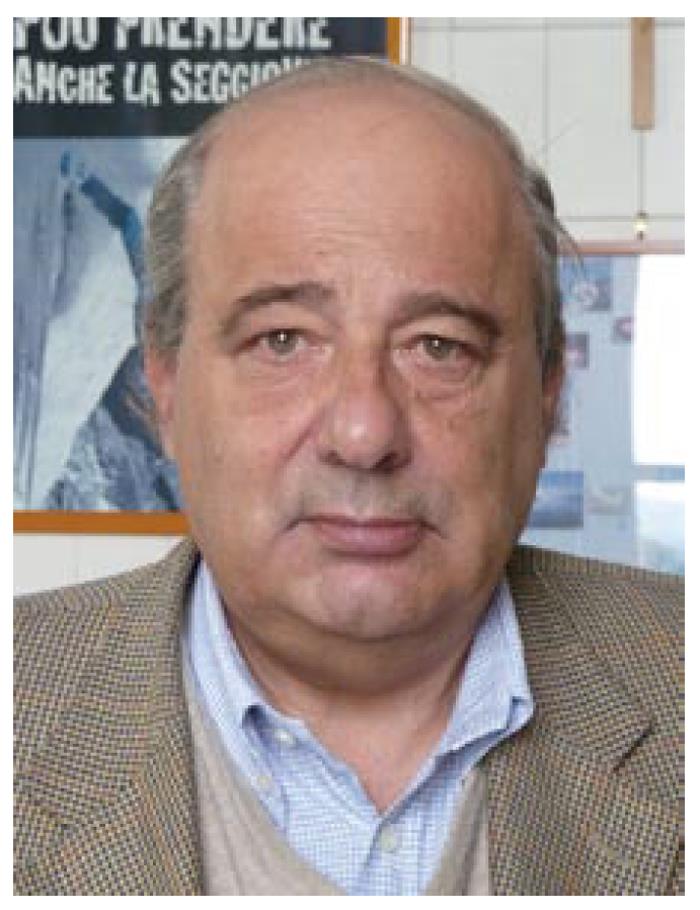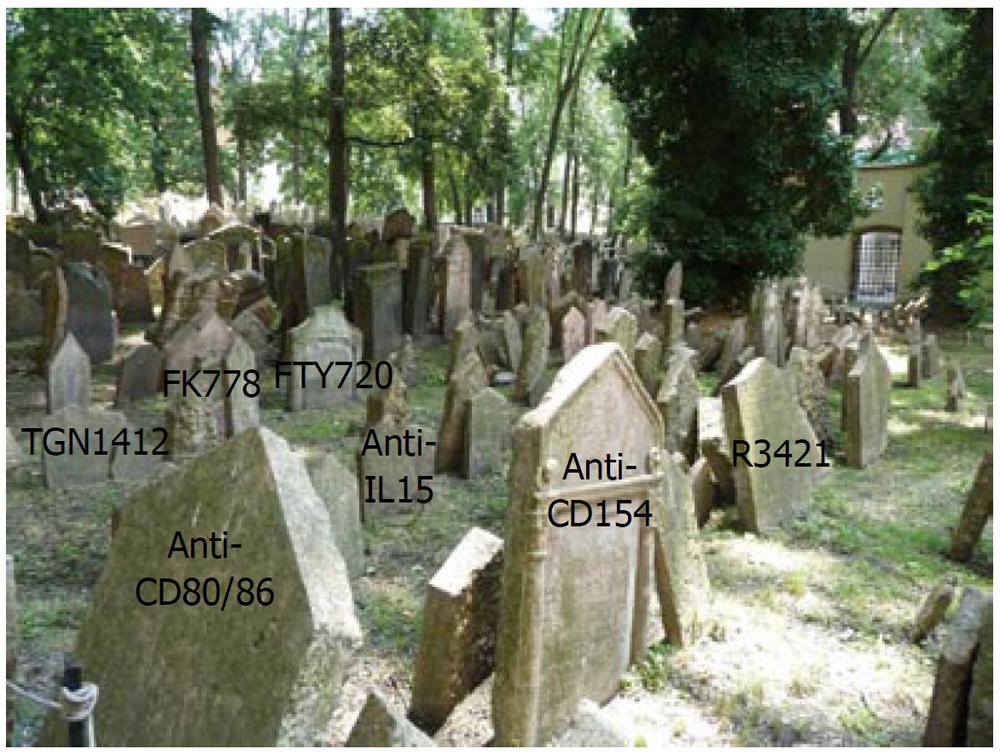Revised: December 7, 2011
Accepted: December 19, 2011
Published online: December 24, 2011
Congratulations to the publisher, members of the editorial board of the journal, all the authors and readers for launching the World Journal of Transplantation (WJT) as a new member of the World series journal family. Transplantations are rapidly evolving and share knowledge with a number of basic and clinical sciences: molecular biology, stem cell investigators, immune system, pharmacology, biotechnology, surgery and physicians of different organs such as the kidneys, liver, heart, lung, bone marrow and so on. The WJT is a peer reviewed open access journal centered on the different fields involved in transplant activity. If you want to share your experiences and new findings in the field of transplantation with your peers you will find the WJT a good media to publish your papers.
-
Citation: Salvadori M. What is the purpose of launching the
World Journal of Transplantation ? World J Transplant 2011; 1(1): 1-3 - URL: https://www.wjgnet.com/2220-3230/full/v1/i1/1.htm
- DOI: https://dx.doi.org/10.5500/wjt.v1.i1.1
I am Maurizio Salvadori, Professor of Nephrology at the Careggi University Hospital of Florence, Italy (Figure 1) and the Editor-in-Chief of the World Journal of Transplantation (World J Transplant, WJT, online ISSN 2220-3230, DOI: 10.5500). It is a great privilege to introduce the WJT as a new forum for exchanging thoughts and experiences about the rapidly evolving field of transplantation both of solid organs and tissues. Congratulations to the publisher, members of editorial board of the journal, all the authors and readers.
I am very pleased to announce that the first issue of the WJT, whose preparatory work was initiated on Jaunary 16, 2011, will be officially published on December 24, 2011. The WJT Editorial board has now been established and consists of 100 distinguished experts from 29 countries. What is the purpose of launching the WJT? What is the scope and how are the columns designed?
Solid organ transplantation has made incredible breakthroughs in the last decades. After initial success in kidneys, liver, heart, lung and small intestine, more recently new complex grafts of hands and faces have been made successfully. Now outstanding papers and works are distributed over a wide range of topics that allow translating findings from the bench to affect patient care. From this point of view, an open access journal has the privilege to rapidly allow new findings to spread among investigators, improving knowledge sharing in a rapidly evolving field.
The main topics emerging in the more recent international meetings are (1) the relevance of donor-specific antibodies as cause of late allograft failure[1]; growing evidence of (2) novel mediators for late allograft failures as monocytes and natural killer cells[2,3]; (3) Novel pathways of allograft injury have been identified as LFA1/ICAM, an adhesion pathway in T cell activation[4,5]. As available organs are not enough with respect to the need, expanding the donor pool became essential; In this context (4) tissue engineering seems to be essential for the evolution of transplantation[6,7]; These strategies include (5) the recellurization of a decellularized organ to realize bio-artificial organs; (6) Organ preservation is also improving and there is a general move towards new technologies in donation after cardiac death. A recent study suggests that the normothermic ex vivo lung perfusion can salvage lungs which would otherwise not be transplanted[8]; and (7) Discovery of new immunosuppressive agents is more and more difficult and expensive, also because many of these drugs fail before entering the market (Figure 2). At present, Belatacept, a CTLA4-Ig protein engineered with high affinity for CD86 and CD80 on antigen presenting cells, is one of the more promising molecules[9] with CP-690,550, an oral Janus associated kinase 3 inhibitor suppressing signaling from a number of cytokines[10].
The aim of the WJT is to rapidly report new theories, methods and techniques for prevention, diagnosis, treatment, rehabilitation and nursing in the field of transplantation. The WJT covers topics concerning organ and tissue donation and preservation; tissue injury, repair, inflammation and aging; immune recognition, regulation, effector mechanisms, and opportunities for induction of tolerance, thoracic transplantation (heart, lung), abdominal transplantation (kidney, liver, pancreas, islets), transplantation of tissues, cell therapy and islet transplantation, clinical transplantation, experimental transplantation, immunobiology and genomics, xenotransplantation, and transplantation-related traditional medicine, and integrated Chinese and Western medicine. The journal also publishes original articles and reviews that report the results of transplantation-related applied and basic research in fields such as immunology, physiopathology, cell biology, pharmacology, medical genetics, and pharmacology of Chinese herbs.
In order to guarantee the quality of articles published in the journal, WJT usually invites three experts to comment on the submitted papers. The contents of peer review include: (1) whether the contents of the manuscript are of great importance and novelty; (2) whether the experiment is complete and described clearly; (3) whether the discussion and conclusion are justified; (4) whether the citations of references are necessary and reasonable; and (5) whether the presentation and use of tables and figures are correct and complete.
The columns in the issues of WJT will include: (1) Editorial: to introduce and comment on the substantial advance and its importance in the fast-developing areas; (2) Frontier: to review the most representative achievements and comment on the current research status in the important fields and propose directions for the future research; (3) Topic Highlight: this column consists of three formats, including (A) 10 invited review articles on a hot topic, (B) a commentary on common issues of this hot topic, and (C) a commentary on the 10 individual articles; (4) Observation: to update the development of old and new questions, highlight unsolved problems, and provide strategies on how to solve the questions; (5) Guidelines for Clinical Practice: to provide guidelines for clinical diagnosis and treatment; (6) Review: to systematically review the most representative progress and unsolved problems in the major scientific disciplines, comment on the current research status and make suggestions on future work; (7) Original Articles: to originally report the innovative and valuable findings in transplantation; (8) Brief Articles: to briefly report novel and innovative findings in transplantation; (9) Case Report: to report a rare or typical case; (10) Letters to the Editor: to discuss and reply to the contributions published in the WJT, or to introduce and comment on a controversial issue of general interest; (11) Book Reviews: to introduce and comment on quality monographs of transplantation; and (12) Guidelines: to introduce consensuses and guidelines reached by international and national academic authorities worldwide on the research in transplantation.
In conclusion, if you want to share your studies and findings rapidly with the aid of the format of an open access journal, you now have the possibility of using the WJT.
Peer reviewer: Sarah Anne Hosgood, Miss, BSc, Department of Infection, Immunity and Inflammation, Transplant Group, Leicester General Hospital, University of Leicester, LE5 4PW, United Kingdom
S- Editor Wang JL L- Editor Roemmele A E- Editor Zheng XM
| 1. | Gaston RS, Cecka JM, Kasiske BL, Fieberg AM, Leduc R, Cosio FC, Gourishankar S, Grande J, Halloran P, Hunsicker L. Evidence for antibody-mediated injury as a major determinant of late kidney allograft failure. Transplantation. 2010;90:68-74. [RCA] [PubMed] [DOI] [Full Text] [Cited by in Crossref: 368] [Cited by in RCA: 390] [Article Influence: 26.0] [Reference Citation Analysis (0)] |
| 2. | Girlanda R, Kleiner DE, Duan Z, Ford EA, Wright EC, Mannon RB, Kirk AD. Monocyte infiltration and kidney allograft dysfunction during acute rejection. Am J Transplant. 2008;8:600-607. [RCA] [PubMed] [DOI] [Full Text] [Full Text (PDF)] [Cited by in Crossref: 116] [Cited by in RCA: 110] [Article Influence: 6.5] [Reference Citation Analysis (0)] |
| 3. | McNerney ME, Lee KM, Zhou P, Molinero L, Mashayekhi M, Guzior D, Sattar H, Kuppireddi S, Wang CR, Kumar V. Role of natural killer cell subsets in cardiac allograft rejection. Am J Transplant. 2006;6:505-513. [RCA] [PubMed] [DOI] [Full Text] [Cited by in Crossref: 96] [Cited by in RCA: 92] [Article Influence: 4.8] [Reference Citation Analysis (0)] |
| 4. | Hoganson DM, Pryor HI, Bassett EK, Spool ID, Vacanti JP. Lung assist device technology with physiologic blood flow developed on a tissue engineered scaffold platform. Lab Chip. 2011;11:700-707. [RCA] [PubMed] [DOI] [Full Text] [Cited by in Crossref: 69] [Cited by in RCA: 61] [Article Influence: 4.4] [Reference Citation Analysis (0)] |
| 5. | Posselt AM, Szot GL, Frassetto LA, Masharani U, Tavakol M, Amin R, McElroy J, Ramos MD, Kerlan RK, Fong L. Islet transplantation in type 1 diabetic patients using calcineurin inhibitor-free immunosuppressive protocols based on T-cell adhesion or costimulation blockade. Transplantation. 2010;90:1595-1601. [RCA] [PubMed] [DOI] [Full Text] [Cited by in Crossref: 112] [Cited by in RCA: 103] [Article Influence: 6.9] [Reference Citation Analysis (0)] |
| 6. | Hsu WM, Carraro A, Kulig KM, Miller ML, Kaazempur-Mofrad M, Weinberg E, Entabi F, Albadawi H, Watkins MT, Borenstein JT. Liver-assist device with a microfluidics-based vascular bed in an animal model. Ann Surg. 2010;252:351-357. [PubMed] |
| 7. | Ott HC, Matthiesen TS, Goh SK, Black LD, Kren SM, Netoff TI, Taylor DA. Perfusion-decellularized matrix: using nature's platform to engineer a bioartificial heart. Nat Med. 2008;14:213-221. [RCA] [PubMed] [DOI] [Full Text] [Cited by in Crossref: 1993] [Cited by in RCA: 1824] [Article Influence: 107.3] [Reference Citation Analysis (0)] |
| 8. | Cypel M, Yeung JC, Liu M, Anraku M, Chen F, Karolak W, Sato M, Laratta J, Azad S, Madonik M. Normothermic ex vivo lung perfusion in clinical lung transplantation. N Engl J Med. 2011;364:1431-1440. [RCA] [PubMed] [DOI] [Full Text] [Cited by in Crossref: 743] [Cited by in RCA: 815] [Article Influence: 58.2] [Reference Citation Analysis (0)] |
| 9. | Gupta G, Womer KL. Profile of belatacept and its potential role in prevention of graft rejection following renal transplantation. Drug Des Devel Ther. 2010;4:375-382. [RCA] [PubMed] [DOI] [Full Text] [Full Text (PDF)] [Cited by in Crossref: 5] [Cited by in RCA: 6] [Article Influence: 0.4] [Reference Citation Analysis (0)] |
| 10. | Thoma G, Nuninger F, Falchetto R, Hermes E, Tavares GA, Vangrevelinghe E, Zerwes HG. Identification of a potent Janus kinase 3 inhibitor with high selectivity within the Janus kinase family. J Med Chem. 2011;54:284-288. [RCA] [PubMed] [DOI] [Full Text] [Cited by in Crossref: 76] [Cited by in RCA: 80] [Article Influence: 5.7] [Reference Citation Analysis (0)] |










